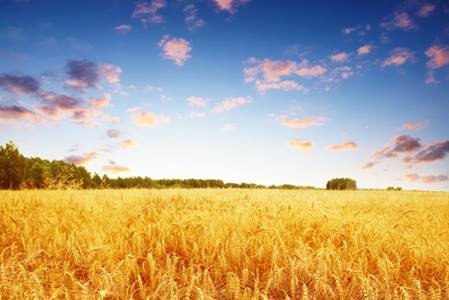田间研究表明食品质量将因不断增加的二氧化碳而变差
来源:《Nature Climate Change》
作者:Arnold J. Bloom等
时间:2014-04-17

当前气候变化正击中食品安全要害。小麦的田间研究阐明了当二氧化碳水平升高到影响植物处理硝酸盐转化成蛋白质的能力时,粮食作物的营养质量是如何变差的。“已经提出几种关于这类营养质量变差的解释,但这是首次阐明升高的二氧化碳抑制种植作物的硝酸盐-蛋白转化过程,”首席研究员说。
田间测试首次证明,二氧化碳水平升高抑制植物硝酸盐同化为蛋白,表明粮食作物的营养质量随着气候变化的加剧而存在风险。
加州大学戴维斯分校植物科学家们的小麦田间试验结果4月6日在线发表于《自然气候变化》。
“大气二氧化碳水平上升情况下食品质量下降,”领衔作者、植物科学系教授Arnold Bloom说。
“这种下降已经提出了几种解释,但这是首个阐明升高的二氧化碳抑制种植作物硝酸盐转化成蛋白的研究,”他说。
氮同化作用,又称氮同化过程,在植物的生长和生产中起着关键的作用。在粮食作物,氮同化作用尤其重要,因为植物利用氮产生对人类营养至关重要的蛋白质。特别是小麦,提供了全球人类饮食蛋白近1/4。
许多以前的实验室研究表明,大气中二氧化碳水平升高抑制谷物和非豆科植物叶片的硝酸盐同化;然而没有用田间生长的植物验证这种关系。
小麦田间研究
为了研究小麦对不同水平大气二氧化碳的反应,研究人员检测了1996和1997年种植在亚利桑那凤凰城附近马里科帕农业中心的小麦样品。
“这些田间研究结果与以前的实验室研究结果一致,表明有几个生理机制负责二氧化碳对叶片硝酸盐同化的抑制作用,” Bloom说。
蛋白比预期下降3%
Bloom说,其他的研究也表明,大气二氧化碳浓度升高条件下,小麦、水稻和大麦籽粒以及马铃薯块茎的蛋白质含量平均下降约8%。
“当这种下降被分解为人类取自各种作物的饮食蛋白比例时,可以确定,在未来几十年内,当大气中的二氧化碳达到预期的水平,可供人类消费的蛋白质总量将可能下降约3%,” Bloom说。
重氮施肥可以部分弥补下降的食品质量,但这也会产生负面影响,包括更高的成本、更多的硝酸盐淋失到地下水和增加温室气体氧化亚氮的排放量,他说。(编译:中国科学院成都生物研究所 王芋华,王海燕)
Nitrate assimilation is inhibited by elevated CO2 in field-grown wheat
Abstract Total protein and nitrogen concentrations in plants generally decline under elevated CO2 atmospheres. Explanations for this decline include that plants under elevated CO2 grow larger, diluting the protein within their tissues; that carbohydrates accumulate within leaves, downregulating the amount of the most prevalent protein Rubisco; that carbon enrichment of the rhizosphere leads to progressively greater limitations of the nitrogen available to plants; and that elevated CO2 directly inhibits plant nitrogen metabolism, especially the assimilation of nitrate into proteins in leaves of C3 plants. Recently, several meta-analyses have indicated that CO2 inhibition of nitrate assimilation is the explanation most consistent with observations. Here, we present the first direct field test of this explanation. We analysed wheat (Triticum aestivum L.) grown under elevated and ambient CO2 concentrations in the free-air CO2 enrichment experiment at Maricopa, Arizona. In leaf tissue, the ratio of nitrate to total nitrogen concentration and the stable isotope ratios of organic nitrogen and free nitrate showed that nitrate assimilation was slower under elevated than ambient CO2. These findings imply that food quality will suffer under the CO2 levels anticipated during this century unless more sophisticated approaches to nitrogen fertilization are employed.
原文链接:http://www.nature.com/nclimate/journal/vaop/ncurrent/full/nclimate2183.html




